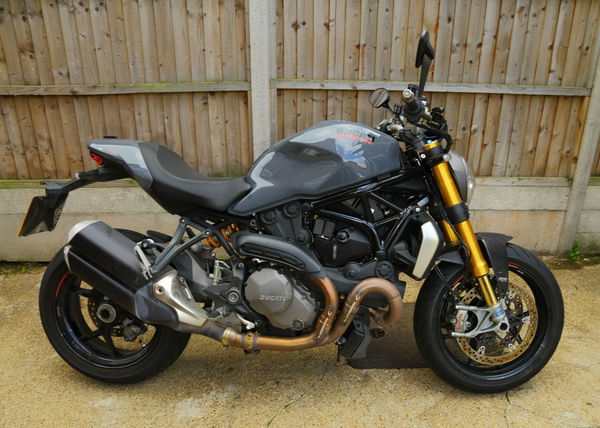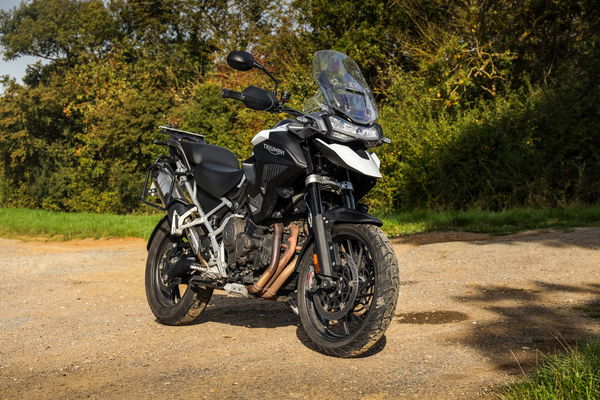Kawasaki Versys-X 300 vs Honda CRF250 Rally review
Mini adventure bikes tested off-road and on
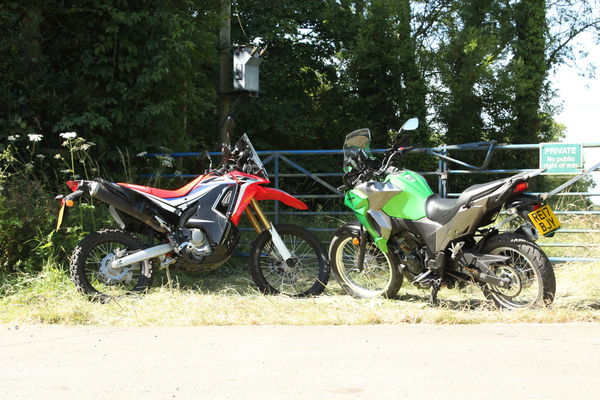
YOU don’t need a full unrestricted licence and 12 grand spare to get an adventure bike anymore.
One of the surprises of last year’s bikes shows was the unveiling of virtually a whole new market of mini-adventure bikes suitable for A2 licence holders.
We’re still waiting for Suzuki’s V-Strom 250 (due to be launched later this month) and BMW’s G 300 GS. But the Kawasaki Versy-X 300 and Honda CRF250 Rally have arrived.
So we thought we’d get on at find out which is best, with a head-to-head road test and a bit of green-laning in Hampshire. Here’s what we found out…
Engine
Bafflingly, Kawasaki hasn’t updated its Ninja 300 or Z300 to gain Euro4 emission compliance. That means that, until they do, when they’re gone, they’re gone.
The firm has updated the 296cc engine to comply with Euro4 though - and stuck it in the Versys-X 300.
That’s good news because that 296 parallel-twin is a great little motor, probably underestimated for the fun it can deliver because of its modest capacity.
It’s got a bit of top-end zing, reminding you that a good engine is not just about power but the way it is delivered.
In the Ninja and Z300 it’s almost like a top-end powerband. The Versys-X 300 has been retuned for a bit more mid-range, but that little top-end surge is still there, picking up from about 8,000rpm. The reason it’s fun is because it feels like an eagerness to rev, a willingness to be thrashed.
And although it’s not going to do a 10-second standing quarter, it makes 40hp, which is pretty good for a 300.
It’s enough for the Versys-X 300 to achieve good motorway cruising speeds with about 2,500rpm to spare before the red line, at 12,000. I’d guess it will push on to a top speed of around 100mph.
It’s bit vibey – my sat-nav kept going haywire and restarting – but not unbearably so. The mirrors at least don’t shake everything behind you into a blur.
The CRF250 Rally engine has much more of a trail bike feel, and you’re going to see a pattern emerging with the Honda in this respect – it is pretty much a trail bike with a screen.
The single-cylinder 250cc plant is a lot down on power compared to the Versys-X, with 24.7hp, and it makes it lower, at 8,500rpm compared to 11,500rpm.
It also makes its peak torque much lower (16.6lbft at 6,750rpm compared to 18.9lbft at 10,000rpm).
So on the road it feels gutless compared to the Kawasaki, with none of the top-end zing.
It will still manage good motorway cruising speeds but feels much closer to the edge of its performance envelope than the Versys-X.
But off-road, the lower-down torque makes the Honda feel a bit easier to control, with more there at an instant’s notice to pull you up an incline.
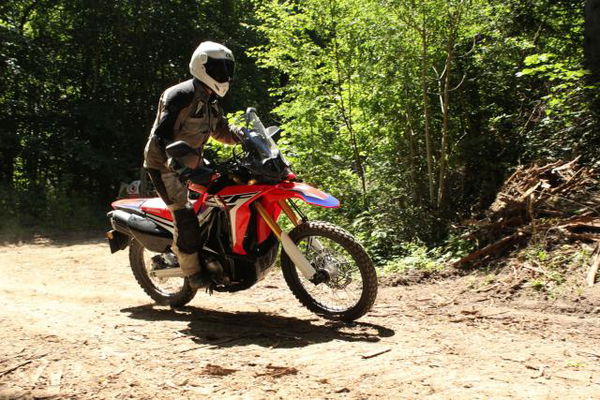
Handling
Again, the Honda feels more like a dirt bike – nimbler and lighter-weight than the Kawasaki, which has more of a road-biased adventure bike feel.
A key difference is in the wheels. The CRF250 Rally is on a 21-inch front and 18-inch rear while the Versys-X 300 has a 19-inch front and 17 rear.
Add to that the tyres – knobblies on the CRF and dual-sports on the Verys – and the Honda is much more confidence inspiring on dirt, tracking reassuring through rocky sections of trail like they’re not there.
The Versys-X will do it, but not quite with the same sure-footedness, making for a more nervous experience.
Although they’re street-biased, I wasn’t inspired with confidence by the Kawasaki’s tyres on the road either. They’re IRC Trail Winner GP-210s and they felt a little vague to me.
The CRF’s knobblies, though, are a real limitation on the road, as you’d expect, requiring you adjust cornering speed. You can feel the squishy rubber flexing at even modest angles of lean.
Suspension
You know what I’m going to say about the CRF250 Rally now, don’t you? That’s right: more trail bike.
It has that tendency of proper off-road bikes for the suspension to extend significantly when you get off it. This means it won’t go on the side-stand when you’re sitting on it, because the stand is of a length to accommodate the bike’s extra height without your weight. So you have to kick the side-stand up and then get on.
It also means the seat height isn’t as tall as it looks. I’m just about average height and by the time my weight was compressing the suspension I could get both feet flat on the ground. On the Versys-X I could just about do the same.
The CRF’s set-up was much better at soaking up whatever the trail could throw at it, carrying you straight over it like a cushion of air, again inspiring more confidence than the Versys-X.
The Honda’s seat lets you move backward and forward more, putting extra weight on the front or rear as required. The bike feels narrower between the knees, so there’s a bit more freedom to move as you stand on the pegs, too.
Away from the dirt, the CRF feels like what it is: a dirt bike on the road, pivoting forward dramatically when you get on the brakes.
The Versys-X is much more road-biased, so more comfortable braking hard on tarmac, while still coping pretty well with the trail.
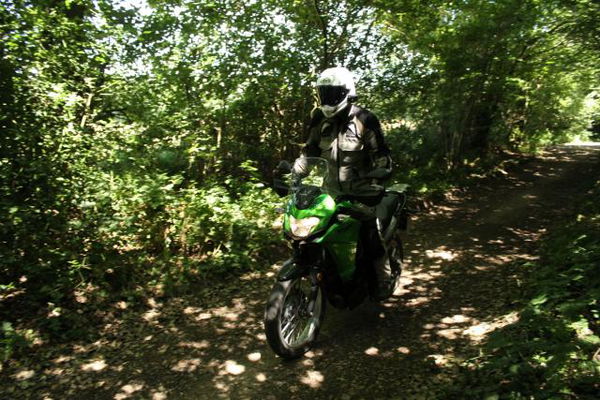
Brakes
Both bikes offer acceptable brakes that aren’t going to scare the life out of newer riders with ferocious bite. The Versys-X’s seemed to have a little more power, despite the Honda’s slightly bigger front disc, at 296mm to 290.
But the Honda’s knobbly tyres and long-travel forks again play a part. Off-road, the front tyre massively increases confidence under braking while on-road it combines with fork-dive to diminish it.
Both have ABS but CRF250 Rally’s can be turned off at the rear wheel for more off-road control.
Equipment
This is where the Versys-X comes into its own. ABS is the only kind electronic rider aid you’ll find on either machine so the comparison comes down to more basic, practical equipment, which the Versys-X 300 has more of.
As well as a tall screen - taller than the CRF’s and providing impressive high-speed protection – the Versys-X 300 comes with that very useful luggage rack.
There’s an ‘Adventure’ edition of the Versys-X 300 which comes with extras including skinny panniers, handguards and a centre-stand for £750 more than the base model, at £5,899. And there’s an ‘Urban’ one, including a top box, centre-stand and handguards, for £5,549.
We like
What impresses quickly about the Versys-X is its all-round capability: wind protection, luggage-carrying capacity, motorway cruising ability, off-road ability.
If you can live with 40hp then it could be the only bike you ever need, for commuting, touring or whatever. And the Versy-X 300 proves that 40hp is enough to have fun.
The CRF250 Rally, on the other hand, impresses for its greater green-laning ability combined with some longer-distance potential thanks to that screen. It’s also got a bigger tank than the CRF250L it’s based on, at 10 litres compared to 7.8.
If off-roading is what you want to do, it will take you places the Versys-X won’t. At one point the trail twisted around a corner and steeply downhill, and I couldn’t really see where it was going. I didn’t fancy it on the Kawasaki but on the Honda, no problem.
Plus, the CRF250 Rally looks great, a bit like a mini version of the Africa Twin Enduro Sports concept unveiled by Honda last year.
We don’t like
The Versys-X 300 has an exceptionally hard seat. In practice, it didn’t prove as uncomfortable as I initially expected, probably no more so than the narrow seat on the CRF. But why Kawasaki hasn’t just made it softer is unfathomable. The foam looks thick enough but is as yielding as rock.
Also, the Versys-X 300 colours. If you don’t like bright green (and some people don’t, believe it or not, Kawasaki), then you’re stuck with drab grey. Next year there’s a new option of black.
Come on. It’s an exciting little bike. Give us a red one or something.
Comparatively the CRF250 Rally lacks excitement on the road. But it is what it is: a 250 trail bike with a screen. And a good one.
Neither bike seems very cheap given the capacity, at £5,149 for the Kawasaki and £5,329 for the Honda. Bear in mind you can get a middleweight Suzuki SV650 for £5,669 or Yamaha MT-07 for £6,199. I know they’re very different but still, they’re all motorcycles.
CLICK NEXT FOR VERDICT AND SPECS
Verdict
One of the things this test shows is what a broad term ‘adventure bike’ is and how two machines in the same class can be totally different but both valid.
Which of these bikes is best comes down simply and only to what you expect an adventure bike to be. If it’s an all-rounder that will tour or be your daily road bike, then it’s clearly the Versys-X 300. If it’s an off-road bike that can also take you longer distances by road, then it’s obviously the CRF250 Rally.
For the purpose of this test though, the Kawasaki Versy-X 300 wins, by a smidgeon, and based purely on value. Given it’s £180 cheaper than the Honda, it just seems that overall you get more, including an extra cylinder.
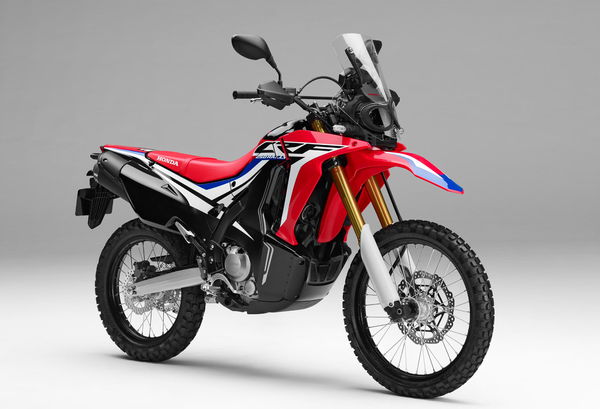
Model tested: Honda CRF250 Rally
Price: £5,329
Engine: 250cc single
Power: 24.7hp @ 8,500 rpm
Torque: 16.6lbft @ 6,750rpm
Kerb weight: 157kg
Seat height: 895mm

Model tested: Kawasaki Versys-X 300
Price: £5,149.00
Engine: 296cc parallel-twin
Power: 40hp @ 11,500rpm
Torque: 18.9lbft @ 10,000rpm
Kerb weight: 173kg
Seat height: 845 mm (815mm optional)
